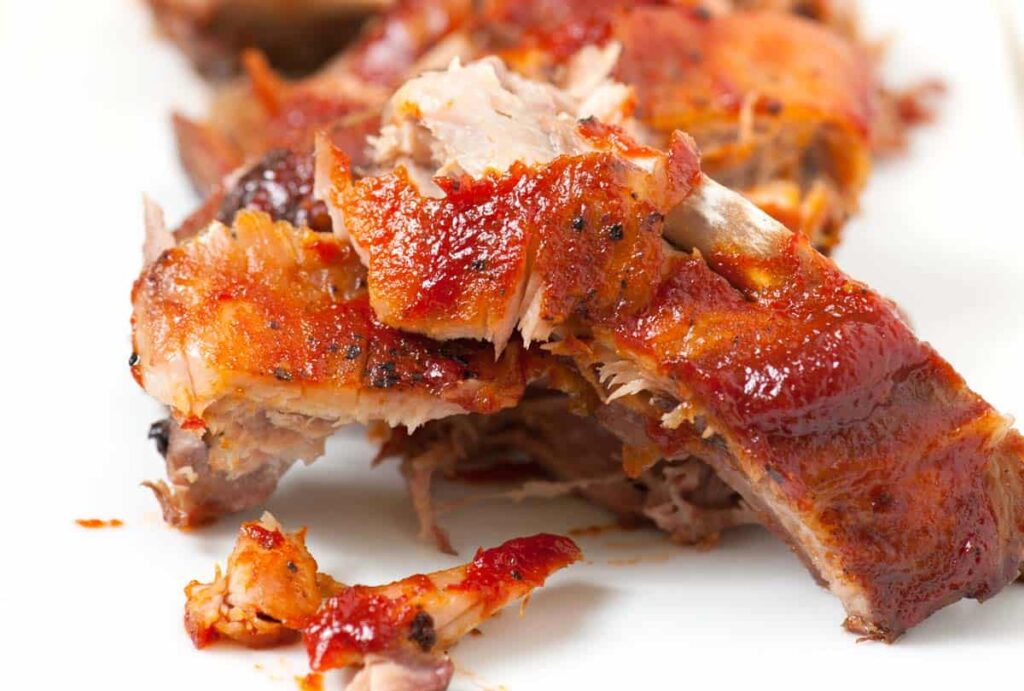
The Quest for Fall-Off-the-Bone Deliciousness: How Long to Cook Ribs in the Oven at 350°F
For many, barbecue ribs are the quintessential comfort food, offering a symphony of smoky flavors and melt-in-your-mouth tenderness. While achieving this deliciousness can seem daunting, oven-baked ribs are surprisingly achievable, even for novice cooks. But the million-dollar question remains: how long to cook ribs in the oven at 350°F to achieve the perfect texture and taste?
This article dives deep into the world of oven-baked ribs, exploring the factors that influence cooking time, offering guidance on various rib cuts, and providing tips to ensure your ribs become the star of the show.
The Science of Tender Ribs:
The key to perfectly cooked ribs lies in understanding the science behind their transformation. During cooking, the connective tissue within the ribs, primarily collagen, breaks down into gelatin. This breakdown softens the meat, resulting in the coveted “fall-off-the-bone” texture.
Factors Affecting Cooking Time:
Several factors influence how long to cook ribs in the oven at 350°F:
-
Cut of Ribs: Different rib cuts have varying amounts of meat and connective tissue, impacting their cooking time.
- Baby Back Ribs: These thinner ribs cook faster, typically requiring 2-2.5 hours at 350°F.
- Spare Ribs: These thicker ribs have more connective tissue, necessitating longer cooking times, ranging from 2.5-3 hours at 350°F.
- Country-Style Ribs: These meaty ribs often require pre-cooking or higher temperatures to achieve tenderness.
-
Starting Temperature: Collagen breakdown accelerates at higher temperatures. Pre-searing ribs at a higher temperature (e.g., 400°F) for 15-20 minutes before lowering the heat to 350°F can expedite the process.
-
Wrapping vs. Unwrapped: Wrapping ribs in foil during part of the cooking time creates a steamy environment, promoting faster collagen breakdown and resulting in more tender ribs.
A Guide to Cooking Times:
Here’s a general guide for cooking ribs in the oven at 350°F, keeping in mind variations based on the factors mentioned above:
- Baby Back Ribs (Unwrapped): 2-2.5 hours
- Baby Back Ribs (Wrapped for the Last Hour): 1.5-2 hours
- Spare Ribs (Unwrapped): 2.5-3 hours
- Spare Ribs (Wrapped for the Last 1-2 Hours): 2-2.5 hours
- Country-Style Ribs: Pre-boil or simmer for 30-45 minutes, then bake unwrapped at 350°F for 1-1.5 hours.
The Ultimate Test: The “Bend Test”
Instead of relying solely on time, the “bend test” offers a reliable method for judging doneness. With tongs, gently lift the ribs from the center. If they bend readily, with a slight crack at the bone, they’re perfectly cooked. If they remain rigid, continue cooking for 15-minute intervals until they achieve the desired tenderness.
Tips for Perfect Oven-Baked Ribs:
- Season generously: Use a flavorful rub or marinade to infuse the ribs with deliciousness.
- Low and slow is the way to go: Cooking at a lower temperature ensures even cooking and prevents the ribs from drying out.
- Basting adds flavor: Baste your ribs periodically with barbecue sauce, broth, or apple cider vinegar for an extra layer of flavor and moisture.
- Don’t overcook: Overcooked ribs can become mushy and lose their flavor. Use the “bend test” to ensure perfectly cooked meat.
Beyond the Basics: Advanced Techniques for Oven-Baked Ribs:
- Smoker Box: For a smoky flavor without a smoker, use a smoker box filled with wood chips placed on the oven rack below the ribs.
- Sous Vide: For ultimate control over doneness, pre-cook ribs using sous vide (vacuum-sealed cooking) at a precise temperature before finishing them in the oven for a beautiful crust.
FAQs:
1. Should I cover my ribs in foil when cooking in the oven at 350°F?
Wrapping ribs in foil for part of the cooking time can expedite the process and result in more tender meat. However, unwrapping them for the last 30 minutes allows for a crispy crust to develop.
2. Can I cook ribs at a higher temperature to save time?
Cooking ribs at a higher temperature can save time, but it requires careful monitoring to prevent drying out. Consider increasing the heat to 400°F for the initial 30 minutes to sear the ribs, then lowering the temperature to 350°F for the remaining cooking time.
3. How do I know if my ribs are burnt?
Burnt ribs will have a charred black exterior and may be dry and tough throughout. If you suspect burning, remove them from the oven immediately. Burnt areas can sometimes be salvaged by trimming them off.
4. What if my ribs are still tough after the recommended cooking time?
Continue cooking the ribs in 15-minute intervals, checking for tenderness with the “bend test” after each interval. If the ribs remain tough even after extended cooking, they may have been under-seasoned, a cut that requires a different cooking method, or simply of lower quality.
5. What can I serve with my oven-baked ribs?
Oven-baked ribs pair well with various side dishes. Classic options include:
- Mac and Cheese: A creamy and comforting side dish that complements the smoky flavors of the ribs.
- Coleslaw: A refreshing and tangy salad that cuts through the richness of the ribs.
- Baked Beans: A sweet and savory side dish that adds another flavor dimension to the meal.
- French Fries or Onion Rings: Crispy and satisfying, these sides balance the texture of the ribs.
- Cornbread: A classic Southern side dish that soaks up the barbecue sauce drippings.
Conclusion:
Cooking ribs in the oven at 350°F is a simple yet rewarding technique for achieving fall-off-the-bone deliciousness. By understanding the science behind the cooking process, considering the factors that influence cooking time, and utilizing the tips and techniques mentioned above, you can transform humble ribs into the star of your next barbecue or weeknight dinner. Remember, patience is key – don’t rush the process and let the low and slow cooking method work its magic. With a little practice and these helpful guidelines, you’ll be a master of oven-baked ribs in no time!




